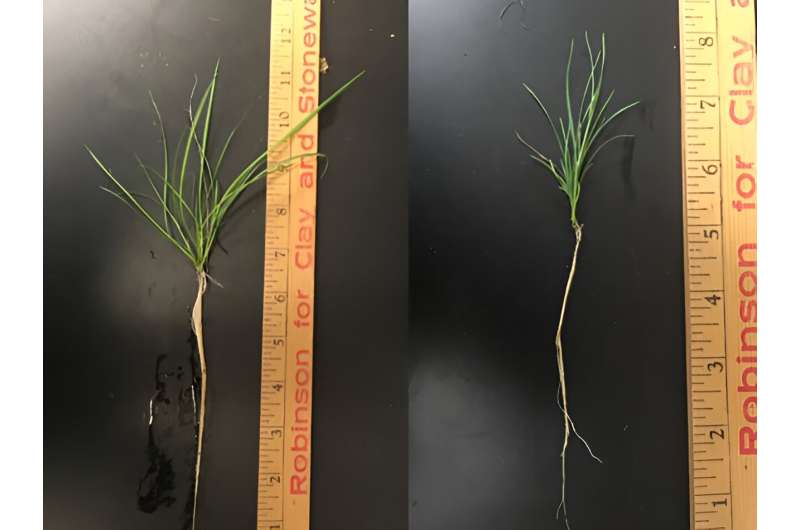This article has been reviewed according to Science X's editorial process and policies. Editors have highlighted the following attributes while ensuring the content's credibility:
fact-checked
peer-reviewed publication
trusted source
proofread
Plant growth regulators' impact on creeping bentgrass during heat, salt and combined stress

A recent study by scientists at Ohio State University sheds light on the intricate relationship between plant growth regulators and the resilience of creeping bentgrass under varying environmental stressors such as heat stress and salt stress.
The research is published in the journal HortScience.
Creeping bentgrass (Agrostis stolonifera L.) is a commonly used and economically valuable turfgrass species that is widely used on golf courses throughout the United States. In field settings, plants are often subjected to multiple stresses at a time, and studying stresses independently is likely insufficient. Stresses, such as heat stress and salt stress, can affect plant hormone levels, and in turn, plant hormone levels can affect how well the plant tolerates stress.
Scientists conducted a series of experiments aimed to ascertain whether the levels of heat stress and salt stress employed would negatively impact the health of creeping bentgrass, as well as to evaluate whether the application of plant growth regulators could enhance plant health under stress conditions. They discovered that certain plant growth regulators demonstrated the ability to enhance the stress tolerance of Creeping bentgrass, particularly under conditions of heat and salt stress. These findings open avenues for the development of novel strategies to mitigate the adverse effects of environmental stressors on turfgrass health.
The application of specific plant growth regulators resulted in optimized growth and development patterns in creeping bentgrass, even in the presence of stressors. This discovery offers promising prospects for improving turf quality and sustainability in diverse environmental settings.
The study identified interdependent interactions between plant growth regulators and environmental stressors, highlighting the complexity of turfgrass physiology and the potential for tailored management approaches. This research also provides practical insights that can directly benefit turfgrass managers, agronomists, and environmental stakeholders.
According to co-author Arly Drake, an assistant professor of Agriculture at Clark State University, "Of all the things we apply to turf, I have always thought the growth regulators are neat, particularly the GA synthesis inhibitors. Mainly because they do things other than just regulate vertical growth."
Last author David Gardner is a professor of turfgrass science at the Ohio State University. He primarily studies weed control in turfgrass and ornamentals but also does research in stress physiology, such as shade stress or heat stress.
More information: Arly Marie Drake et al, Effect of Plant Growth Regulators on Creeping Bentgrass during Heat, Salt, and Combined Stress, HortScience (2023). DOI: 10.21273/HORTSCI16978-22
Journal information: HortScience
Provided by American Society for Horticultural Science




















